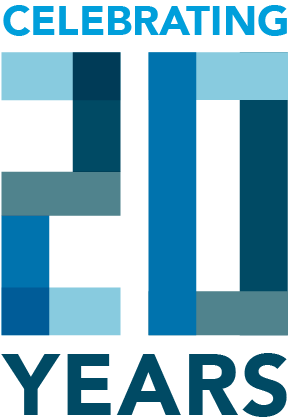According to the Futures Industry Association, exchange-traded futures and options volume grew 133 percent globally from approximately 9 billion contracts in 2004 to over 21 billion in 2012. Equities trading grew at an even faster rate, up 180 percent from 3.5 billion trades in equity shares in 2004 to 9.8 billion trades in 2012 according to the World Federation of Exchanges.
Considering that most trading volume is electronic—and that electronic volume continues to grow—it’s easy to see that the size and speed of data transmission in today’s financial markets brings challenges to exchanges, money managers and financial service firms. How can the numerous players and platforms streamline the transmission of data to conduct business efficiently and economically?
Enter the Financial Information eXchange (FIX) protocol. Since 1992, FIX has been specifying electronic communications standards for the financial markets. Today, FIX is the de facto benchmark for those communications.
The University of Chicago’s campus in Hyde Park
FIX Protocol Limited (FPL), the group that manages the development of FIX and promotes its use, states that “virtually every major stock exchange and investment bank uses FIX for electronic trading, as do the world’s largest mutual funds and money managers and thousands of smaller investment firms. Leading futures exchanges offer FIX connections and major bond dealers either have or are implementing them.” As orders are entered, cancelled or queried around the world, standardized FIX messages are used to manage and report them.
Developers use FIX messaging specifications to create software that electronically communicates trading information to a counterparty’s software, oftentimes replacing messages that were previously communicated between counterparties via telephone, fax or email.
TT’s FIX Adapter allows clients to use the industry-standard FIX protocol to integrate customer and third-party order routing, market data and trade capture systems with the TT platform. Clients use the FIX Adapter to quickly and efficiently integrate existing FIX-enabled systems with TT’s trading platform for compliance, trade tracking and fill reporting, order management and routing, and trade automation.
Using FIX-based messages rather than a proprietary messaging system helps ensure that different software programs can communicate with, understand and respond to each other. When disparate systems use standardized FIX messages, they can efficiently manage and report the status of orders as they are entered, cancelled or queried around the world. You might say FIX is the “international” language of the financial services industry.
In “What are the Benefits of FIX Protocol?”, FPL opines that the benefits of the widespread use of a standard messaging protocol include:
- Reduced cost and complexity of integrating various internal activities.
- Increased ability to share infrastructure in terms of software, hardware and internal staff.
- Lower costs resulting from minimizing re-keying and translating data.
- Easier monitoring of overall positions.
Integrating FIX with academics at the University of Chicago
It’s easy to see how a working knowledge of FIX would be valuable to students seeking to work in today’s trading and financial services industries. The faculty at the University of Chicago, one of TT’s University Program partners, understand this. The curriculum for the university’s degree in financial math includes a course that requires students to complete projects using the FIX protocol.
TT recently sat down with Chanaka Liyanaarachchi, who teaches the course, to discuss the class and why he feels his students need this experience.
Can you describe the students’ project?
Chanaka: The project was part of a series of Computing for Finance courses taught in the Financial Mathematics Program at the University of Chicago. Working in groups, students wrote an electronic trading program using a trading algorithm of their choice. They used FIX to gather market data and to send out messages related to orders to TT’s Developer Environment.
What was the objective of this project?
Chanaka: My main objective was to provide the students with both an interesting and relevant project that would allow them to practice the programming skills they learned in the Computing for Finance series, which emphasizes project-based learning.
Were there any other goals of the project?
Chanaka: One of my secondary goals was to introduce the FIX protocol to the students. Now that electronic trading has all but eclipsed the other forms of trading, and because FIX is an industry standard in electronic trading, it is a good tool for any financial engineer to be familiar with.
Additionally, it gave the students a chance to use a “real” professional trading platform, along with the opportunity to learn about a variety of products offered by different exchanges. And, finally, the students learned how to successfully complete a software project as a group.
Were these objectives met?
Chanaka: Based on the feedback I’ve received so far, it would seem that the set objectives were successfully met! The students practiced programming skills, and used concepts they learned in other Financial Mathematics courses to design and analyze trading algorithms, price instruments, etc.
Why did you use FIX; why not TT’s proprietary API?
Chanaka: Either would have been a good choice; we could have achieved the main goals of the project by using TT’s proprietary API. Ultimately, FIX was chosen because it is an industry standard.
Why did you select TT as opposed to writing directly to exchange APIs?
Chanaka: Due to a large class size, we had to request a significant amount of resources from TT. We greatly appreciate TT’s efforts to accommodate our requests in a timely manner. From a technical point of view, the TT Developer Environment allowed the students to access different markets of their choice, and to switch between different markets with ease, due to uniform/normalized access. This is the main technical reason why we chose to go with the TT system, as opposed to directly connecting to an exchange.
Quite often our collaboration with universities results in a mutually beneficial relationship: universities benefit from our assistance with “real-world” applications while we benefit from their feedback and the students they educate. The University of Chicago has proven to be a good example of this. The best is yet to come.
 |
| Chanaka Liyanaarachchi |
About Mr. Liyanaarachchi
Chanaka teaches “Computing for Finance” in the Financial Math Program at the University of Chicago. A graduate of the University of Peradeniya (Sri Lanka) in electrical engineering and Computer Science, he earned his Master’s in Computer Engineering from the University of Kansas. In addition to this, he has an MBA in Finance from DePaul University and a Master’s in Financial Math from the University of Chicago. He has been trying to improve the computing courses to teach students the necessary computing skills needed in today’s finance industry. His current interests include high-performance computing in financial applications and functional programming.



